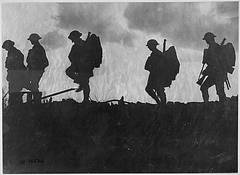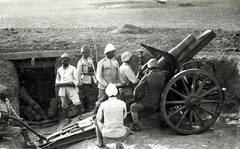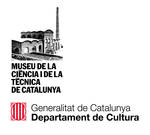29 July 2014
The stories that made history. Heritage and ICT one century after the WWI
On 28 June 1914, Austrian Archduke Franz Ferdinand was shoot to death by the Gavrilo Princip, a Serbian nationalist, which action detonated decades of mounting tensions and arms race between European Powers.
The following events, known as the July Crisis, quickly brought to the outbreak of the First World War, the very first contemporary war, fought by global, mass armies on the European soil, all of them equipped with revolutionary armour and modern, devastating weaponry.
Today, after 100 years, Europe try to remember those tragic years that started the short Twentieth century, as it was called by the English historian Eric Hobsbawm, the same century which testified the birth of a united Europe after two world wars.
In a wide, shared effort to keep the memory and the heritage of the Great War alive, many European cultural institutions inaugurated a series of initiatives which, thanks to ICT and new media, helps to revive European past.
A lot of interesting resources and projects related to WWI are spanning daily worldwide, and a good starting point to keep track on them is as usual Twitter. Searching for #WWI (or, more easily, looking at the feed at the end of this page) allows to have a great overview on the many projects and their development.
One of the main project is curated by Europeana, which launched its incredibly vast and rich collection about the Great War, called "Europeana 1914-1918". This very valuable collection gives an unlimited access to 400,000 digitised documents, 660 hours of unique film material and 90,000 personal papers and memorabilia of some 7,000 people involved in the war.
During the last months, Europeana organised all over the Europe events to digitize those papers and memorabilia, asking families of people involved in the WWI to help in the effort to revealing hidden stories of the war.
It's interesting the emerging trend of people's involvment in better shaping their recent history.
Asking the people to digitize and publicize familiar heritage, such as pictures, postcards and letters, seems to be a trend shared by many of the project related to the WWI centenary. New technologies, social media and ICT helped in fact to actively engage citizens and enthusiasts and allow them to contribute in the shaping and the understanding of one of the most important event of our contemporary history.
Micro stories that helps to improve the definition of history
Thanks to the application of ICT to heritage's realm, a tremendous number of stories, from the most ordinary to the extraordinary ones, are finally accessible to everyone, and they do actively help to create a broader yet more detailed picture of the events and the stories behind historical events, such the Great War.
Following this trend, the British' Imperial War Museum launched the permanent digital memorial for the Lives of the First World War. The Museum, which was established while the WWI was still being fought in 1917, was intended "as a record of the toil and sacrifice of those who had served in uniform or worked on the home front".
After nearly a century from its fundation, IWM opened up its archives and asked the public to help better shaping the stories and the knowledge of the people who fought the war. As for Europeana 1914-1918, a great amount of digitized documents and resources were also made available for the public, and the Museum has opted for a crowdsourced approach to better shape the records and to link together evidence and documents related to every person in the register.
Another look inside the micro-stories which composed the XX century history is the Italian's WW1 - Dentro la Grande Guerra ("inside the Great War"), which offers "an editorial platform that addresses the public through a wide interactive map of the War Front containing many so far unpublished contents: 360° interactive and immersive panoramas, emotionally involving videos, certified historical documents, the Army’s official reports on the Great War, private memories, the reconstruction of forts and trenches and stories about daily life."
In addition to those projects which take full advantage of the web 2.0 for the sake of history and memory, the ubiquitous and detailed maps of the world available on the web served as an important tool for the National Library of Scotland, which recreated on Google Maps the paths of the British and German trenches used in the First World War.
The historical maps, displaying distances, pointing guidances and artillery's positions, are laid onto Google satellite imagery, placing side by side one century of history and creating a very interesting juxtaposition of past and present.
Dozens of truly interesting projects and initiatives were launched to rember the outbreak of WWI, and the emerging trend seems to be very much about people's and citizen's participation in their own heritage's curation. This trend was already discussed by CreativeCH in one of the workshops organized within the project.
To learn more about the topic, make sure to read the Citizen Cultural Participation's workshop report, available here.
Stefano Sbarbati
#WWI Tweetsback








